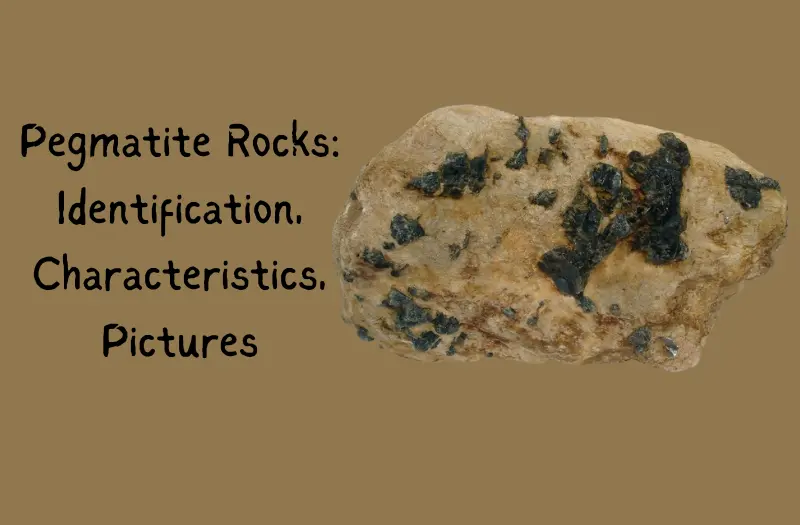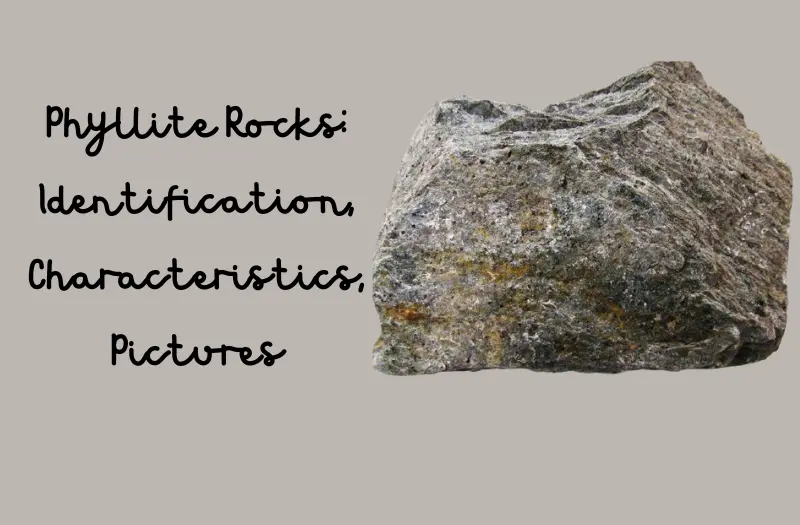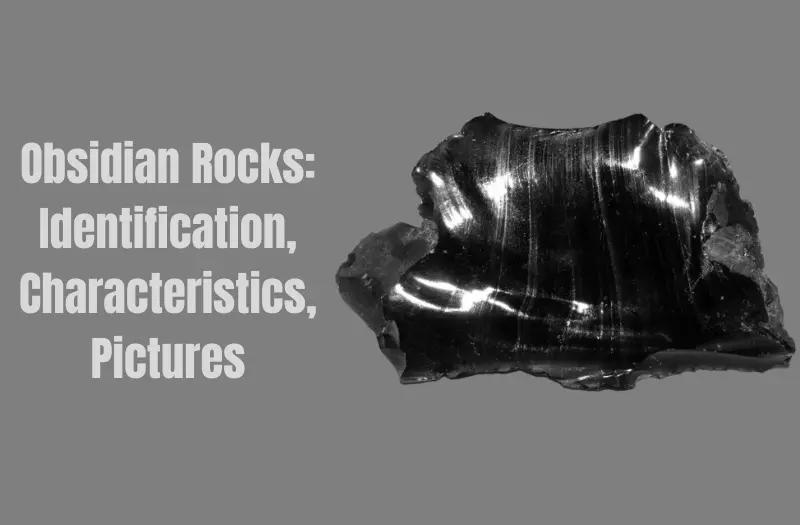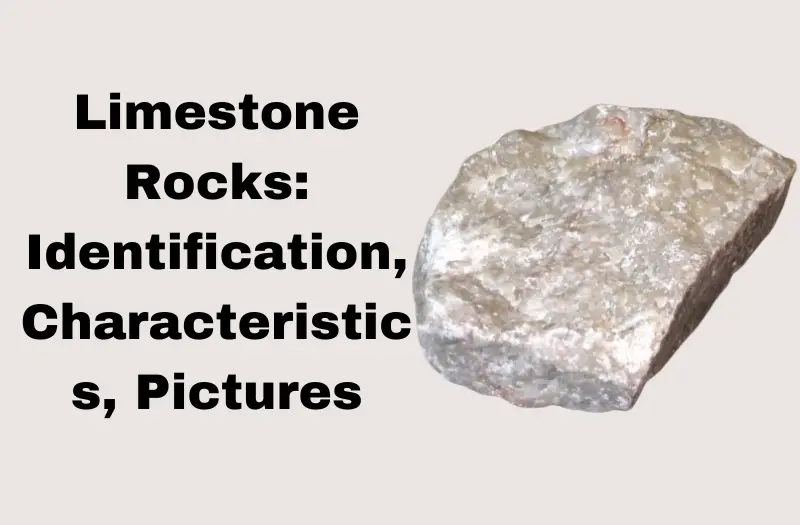When you stumble upon a majestic gemstone like an aquamarine or a striking crystal like tourmaline, have you ever wondered about the geological wonders that house these treasures?
Pegmatite rocks are the enigmatic formations behind these captivating minerals. Their intricate composition and unique characteristics make them a fascinating subject of study.
As you begin to uncover the secrets of pegmatite rocks, you will be amazed by their diverse array of minerals and the remarkable ways in which they shape our world.
Origins of Pegmatite Rocks
Pegmatite rocks form from the slow cooling of molten rock deep within the Earth’s crust. These unique rocks are a result of specific geological processes that involve the crystallization of minerals in large cavities within the cooling magma. Pegmatites are known for their exceptional size crystals, often exceeding a centimeter in diameter due to the slow cooling process which allows for the growth of these large crystals.
The origins of pegmatite rocks hold significant economic significance due to the gemstone extraction opportunities they present. Gemstones such as tourmaline, beryl, and quartz are commonly found in pegmatites, making them attractive for mining operations. The large crystals found in pegmatites make them ideal for the extraction of high-quality gemstones, which can be cut and polished for use in jewelry and other decorative items. This economic value drives interest in locating and mining pegmatite deposits around the world.
Composition of Pegmatite Rocks
With the economic significance of pegmatite rocks stemming from their gemstone extraction opportunities, understanding the composition of these rocks becomes crucial for maximizing mining potential.
When analyzing the composition of pegmatite rocks, it’s important to note the following:
- Mineral Composition: Pegmatite rocks have a unique mineral composition that sets them apart from other rock types. These rocks often contain rare minerals such as beryl, tourmaline, spodumene, and quartz, making them highly sought after for gemstone extraction. Pegmatites are known for their large crystals, sometimes reaching several meters in size, due to their slow cooling process.
- Geological Distribution: Pegmatite formations are typically found in association with mountain-building processes and are commonly located in regions with significant geological activity. This distribution pattern plays a crucial role in identifying potential areas for pegmatite mining. Pegmatites are often found in close proximity to granitic rocks, as they form from the residual melts of these magmas.
- Rare Minerals, Gemstone Extraction: The presence of rare minerals within pegmatite rocks makes them valuable for gemstone extraction, attracting miners and gem enthusiasts alike to explore these geological formations for precious stones.
Understanding the mineral composition and geological distribution of pegmatite rocks is essential for successful mining operations and exploiting the valuable gemstones they contain.
Physical Characteristics of Pegmatite
Take note of the color and texture of pegmatite rocks to distinguish them from other rock types.
Examine the mineral composition, as pegmatites often contain unique minerals not found in typical rock formations.
Consider the grain size of the pegmatite, which can vary significantly and aid in identifying these intriguing rocks.
Color and Texture
When examining pegmatite rocks, observe their color and texture to gain insights into their physical characteristics.
- Color
- Colors in pegmatite rocks can vary widely, including white, pink, gray, and even green.
- The color of the minerals within the pegmatite can influence the overall hue of the rock.
- Some pegmatites may exhibit color zoning, where different mineral concentrations create distinct bands of color.
- Texture
- Pegmatite rocks often have a coarse texture due to their large crystal sizes.
- The interlocking crystals give pegmatites a granular appearance.
- In some cases, pegmatites can display a graphic texture, showing a distinctive intergrowth of minerals like quartz and feldspar.
Mineral Composition
To understand the physical characteristics of pegmatite rocks, examine their mineral composition closely. Pegmatites are known for their unique mineral identification and crystal structure. These rocks typically contain a variety of minerals, including quartz, feldspar, and mica. The crystal structure of pegmatite minerals can vary greatly, often forming large, distinct crystals due to the slow cooling process that occurs deep within the Earth’s crust. This results in pegmatite rocks having a coarse-grained texture, making them easily distinguishable from other types of rocks. By analyzing the mineral composition of pegmatites, geologists can gain valuable insights into the conditions under which these rocks formed and the geological processes that shaped them.
| Mineral | Identification | Crystal Structure |
|---|---|---|
| Quartz | Transparent | Hexagonal |
| Feldspar | White or Pink | Prismatic |
| Mica | Shiny | Thin, Sheet-like |
Grain Size
Considering the physical characteristics of pegmatite rocks, one notable aspect to examine is their grain size, which plays a significant role in distinguishing them from other rock types.
- Pegmatites exhibit a coarse-grained texture due to the slow cooling of the magma, allowing for crystal formation and mineral growth.
- The large crystals found in pegmatites can range from a few centimeters to several meters in size, making them easily distinguishable from finer-grained rocks.
- This unique grain size is a result of the specific rock formation and geological processes that occur deep within the Earth’s crust.
- The slow cooling process of pegmatite magma provides ample time for mineral crystals to grow to exceptional sizes, creating the characteristic coarse-grained appearance of pegmatite rocks.
Identifying Pegmatite in the Field
Look for large, coarse-grained rocks with distinct mineral compositions to help you identify pegmatite in the field. Pegmatite rocks stand out due to their unique characteristics, making them relatively easy to distinguish once you know what to look for. Here are some key features to aid you in field identification:
| Feature | Description |
|---|---|
| Large Grain Size | Pegmatites have grains larger than 1 cm in diameter. |
| Mineral Assemblages | Common minerals found in pegmatites include quartz, feldspar, and mica. |
| Textures | Look for graphic intergrowths, which are distinctive textures found in pegmatites. |
Minerals Found in Pegmatite Rocks
Large pegmatite rocks are known for their diverse mineral compositions, which often include quartz, feldspar, and mica. When it comes to minerals found in pegmatite rocks, here are some key ones you might encounter:
- Quartz:
- Quartz crystals in pegmatites can be exceptionally large and clear, making them desirable for both collectors and industrial uses.
- Feldspar:
- Pegmatites are a common source of high-quality feldspar, which is used in ceramics, glassmaking, and as a filler in various products.
- Mica:
- Mica sheets in pegmatite rocks can be large and thin, suitable for applications in electronics, paint production, and cosmetics.
Exploring pegmatite deposits for these minerals can lead to lucrative opportunities in mineral extraction. Gemstone mining, in particular, can be a rewarding endeavor when targeting pegmatite rocks rich in quartz, feldspar, and mica. Take advantage of the unique mineral compositions of pegmatite rocks for your next mining venture.
Also Read: Obsidian Rocks: Identification, Characteristics, Pictures, and More
Pegmatite Formation Process
When pegmatite rocks form, magma cools slowly, allowing for the growth of large crystals.
As the cooling process occurs, minerals segregate based on their chemical composition through a mechanism that results in the distinctive mineral-rich nature of pegmatites.
This unique process contributes to the formation of pegmatite rocks with their characteristic large crystal sizes.
Magma Cooling and Crystallization
During the formation of pegmatite rocks, magma undergoes a slow cooling process, enabling large crystals to develop within the rock structure. This cooling process is crucial for the formation of pegmatites, as it allows for the growth of unique crystal structures.
Here are a few key points to understand how magma cooling and crystallization contribute to the formation of pegmatite rocks:
- Slow Cooling: Slow cooling of magma allows sufficient time for crystal growth.
- Large Crystals: The slower the cooling process, the larger the crystals can grow.
- Crystal Formation: As magma cools, atoms arrange themselves into a crystalline structure.
- Interlocking Crystals: Crystals interlock as they grow, forming the characteristic texture of pegmatites.
- Chemical Composition: The composition of the magma influences the types of crystals that form.
- Varied Minerals: Pegmatites often contain a diverse array of minerals due to the slow cooling process.
Mineral Segregation Mechanism
As magma slowly cools and crystallizes, the mineral segregation mechanism plays a pivotal role in the formation process of pegmatite rocks. Through geological processes, mineral segregation occurs as crystals grow within the magma. This segregation happens due to the differences in crystal settling rates and mineral enrichment.
As the magma cools, certain minerals become concentrated in specific areas, leading to the formation of pegmatites. The crystal growth in pegmatites is often rapid, allowing for the development of large crystals. This rapid growth is facilitated by the high water content in the magma, which promotes the formation of these unique rocks.
Understanding the mineral segregation mechanism provides insights into the intricate processes that shape pegmatite formations.
Large Crystal Growth
Curiously, how do large crystals grow during the formation process of pegmatite rocks? It all begins with the intricate dance of crystal formation driven by geological processes. Here’s a peek into this captivating phenomenon:
- Slow Cooling: Large crystals form when the molten rock cools slowly underground, allowing ample time for crystal growth.
- Abundant Elements: Pegmatites contain a rich concentration of elements, nurturing the development of sizable crystals.
- Mineral Diversity: The diverse mineral composition of pegmatites contributes to the growth of unique and valuable crystals, attracting mineral exploration for its economic benefits.
Pegmatite Vs. Other Rock Types
To differentiate pegmatite rocks from other rock types, examine their unique mineral composition and large crystal sizes. Pegmatites stand out due to their exceptional crystal sizes, which can range from centimeters to meters in diameter, unlike most rocks with much smaller crystals. This distinct feature makes pegmatites valuable in mineral exploration and extraction processes. When comparing pegmatite rocks to other rock types such as granite, basalt, and schist, their differences become apparent.
| Feature | Pegmatite Rocks |
|---|---|
| Mineral Composition | Abundant in rare minerals like beryl and tourmaline. |
| Crystal Size | Contains very large crystals. |
| Formation | Forms in late stages of magma cooling. |
In terms of mineral exploration, pegmatites offer a unique opportunity for igneous differentiation and mineral extraction due to their rich mineral content and large crystal sizes. Understanding these distinctions is crucial when identifying and working with pegmatite rocks in geological studies and industrial applications.
Economic Significance of Pegmatite
Let’s explore how pegmatite rocks hold significant economic value.
You’ll discover their industrial uses, potential for rare mineral deposits, and opportunities for gemstone extraction.
These points shed light on the practical benefits and commercial importance of pegmatite formations.
Industrial Uses of Pegmatite
Pegmatite rocks hold significant economic value due to their diverse industrial applications in various sectors. When it comes to industrial uses of pegmatite, you’ll be surprised by the range of applications they offer:
- Industrial Applications: Pegmatite is crucial for gemstone extraction, as it often contains valuable minerals like beryl and tourmaline.
- Gemstone Extraction: Pegmatite veins are a prime source for gemstones due to their unique mineral composition.
- Economic Significance: The extraction and processing of pegmatite contribute significantly to the economy, especially in regions rich in these rocks.
- Economic Impact: Pegmatite mining creates jobs and drives local economies.
- Environmental Impact: Sustainable pegmatite mining practices are essential to minimize environmental degradation.
- Sustainability: Proper mining techniques can help reduce the environmental footprint of pegmatite extraction.
Rare Mineral Deposits
With its rare mineral deposits, pegmatite rocks play a crucial role in bolstering various economies worldwide. These geological formations are renowned for their abundance of rare minerals, making them highly sought after for gemstone extraction and other industrial applications. The economic significance of pegmatites lies in their potential to yield valuable resources that are essential in various industries, ranging from electronics to jewelry. The table below illustrates some of the rare minerals commonly found in pegmatite rocks and highlights their economic importance:
| Rare Minerals | Economic Significance | Geological Formations |
|---|---|---|
| Spodumene | Key source of lithium | Forms in pegmatites |
| Beryl | Source of beryllium | Common in pegmatites |
| Tourmaline | Valuable gemstone | Often found in pegmatites |
Gemstone Extraction Opportunities
Given their abundance of rare minerals, pegmatite rocks present lucrative opportunities for gemstone extraction, contributing significantly to various industries worldwide.
If you’re considering entering the gemstone market through pegmatite mining opportunities, here are some key points to keep in mind:
- Diverse Gemstones: Pegmatites often contain a wide variety of gemstones, offering a range of options for extraction.
- High Market Demand: Gemstones extracted from pegmatites are highly sought after in the gemstone market, ensuring a steady demand.
- Potential for Rare Finds: Pegmatite mining presents the exciting possibility of discovering rare and valuable gemstones that can fetch premium prices in the market.
Exploring gemstone extraction from pegmatite rocks could lead to profitable ventures in the ever-growing gemstone industry.
Geological Distribution of Pegmatite
Naturally occurring pegmatites can be found in diverse geological settings around the world, showcasing a wide range of mineral compositions and sizes. These unique rocks are commonly associated with mineral deposits rich in elements like lithium, tantalum, and beryllium. Pegmatites are most frequently discovered in regions with granitic intrusions, where the slow cooling process allows for the formation of large crystals.
Geological distribution plays a crucial role in identifying potential locations for pegmatite exploration. Regions with a history of pegmatite occurrences include parts of North America, South America, Africa, Europe, and Asia. In North America, notable pegmatite belts can be found in places like Maine, South Dakota, and California. In South America, Brazil stands out for its significant pegmatite deposits, particularly in Minas Gerais. African countries like Madagascar and Namibia also boast rich pegmatite resources. Additionally, European countries such as Finland and Russia have been known to harbor pegmatite formations. Understanding the geological distribution of pegmatites is essential for mineral exploration and resource development.
Exploration and Mining of Pegmatite
The geological distribution of pegmatites plays a pivotal role in guiding exploration and mining efforts for these unique rocks rich in valuable minerals. When it comes to exploring and mining pegmatites, there are specific techniques and methods tailored to uncovering their hidden treasures efficiently:
- Exploration Techniques:
- Utilize geophysical surveys to identify potential pegmatite deposits beneath the surface.
- Conduct geochemical sampling to analyze the composition of the rocks and surrounding soil for mineral indicators.
- Employ remote sensing technologies like drones to map out large areas and pinpoint areas of interest for closer inspection.
Mining methods for pegmatites involve extracting the valuable minerals in a cost-effective and environmentally conscious manner. Techniques include:
- Mining Methods:
- Open-pit mining for shallow pegmatite deposits that are close to the surface.
- Underground mining for deeper pegmatite veins that require tunneling underground.
- Sustainable mining practices to minimize the environmental impact and promote responsible resource extraction.
Industrial Uses of Pegmatite Minerals
Industries worldwide rely on pegmatite minerals for their diverse applications in manufacturing and technology. Pegmatite minerals are valuable resources used in various industrial processes, from mineral processing to resource extraction. These minerals are essential in the production of ceramics, glass, and electronics due to their unique properties. Below is a table highlighting some of the industrial uses of pegmatite minerals:
| Industry | Application | Importance |
|---|---|---|
| Ceramics | Insulators | High heat resistance |
| Electronics | Capacitors | Dielectric properties |
| Glassmaking | Optical fibers | Clarity and transparency |
Mineral processing companies extract pegmatite minerals to obtain raw materials for these industries. Resource extraction from pegmatite deposits is crucial for ensuring a steady supply chain for manufacturing processes. The versatility of pegmatite minerals makes them indispensable in modern industrial applications, driving innovation and technological advancements across various sectors.
Environmental Impact of Pegmatite Mining
Pegmatite mining operations can have significant environmental impacts on surrounding ecosystems and communities. These effects are crucial to consider as we strive for environmental sustainability. Here are some key points to understand the environmental impact of pegmatite mining:
- Habitat Destruction: Mining activities can lead to the destruction of natural habitats, disrupting wildlife and plant species that depend on these ecosystems.
- Water Contamination: The process of mining can result in the contamination of nearby water sources, affecting both aquatic life and communities that rely on these water bodies for various purposes.
- Air Pollution: Dust and emissions from mining operations can contribute to air pollution, impacting air quality and the health of individuals living in the vicinity.
To mitigate these environmental impacts, strict adherence to mining regulations and active conservation efforts are essential. By implementing responsible mining practices and supporting conservation initiatives, we can work towards minimizing the negative effects of pegmatite mining on the environment and promoting a more sustainable future.
Frequently Asked Questions
How Are Pegmatite Rocks Used in the Jewelry Industry?
In the jewelry industry, pegmatite rocks are crucial for gemstone extraction. Lapidary techniques are used to cut and polish these rocks, revealing stunning crystals. Their unique composition and large size make them ideal for creating beautiful jewelry pieces.
Can Pegmatite Rocks Be Found in Any Specific Regions Around the World?
Pegmatite rocks can be found worldwide due to their unique geological distribution. They form in specific regions with ideal conditions. Their mineral composition and crystal structure vary, creating diverse formations that geologists study.
Are There Any Famous Landmarks or Geological Formations Made of Pegmatite Rocks?
Yes, famous geological formations and landmarks around the world are composed of pegmatite rocks. These locations showcase the unique characteristics and beauty of pegmatites, attracting geology enthusiasts and tourists alike to marvel at their stunning formations.
What Are Some Lesser-Known Minerals That Can Be Found in Pegmatite Rocks?
In pegmatite rocks, you can find rare minerals and gemstones. Some lesser-known minerals include beryl, tourmaline, and spodumene. These geological formations often house beautiful crystal formations that can be a treasure trove for mineral enthusiasts.
Are There Any Cultural or Historical Significance Associated With Pegmatite Rocks in Different Societies?
In various societies, pegmatite rocks hold cultural significance and historical importance. They have been tied to spiritual beliefs and ancient rituals. Exploring these connections provides insight into the rich tapestry of human interactions with the natural world.
Conclusion
In conclusion, pegmatite rocks are unique in their composition and physical characteristics, making them valuable for industrial uses.
Identifying these rocks in the field can be challenging, but their mineral content and geological distribution offer clues.
Exploration and mining of pegmatite require careful consideration of environmental impact.
Overall, pegmatite rocks play a significant role in various industries and are worth further study for their economic and scientific importance.




Leave a Reply